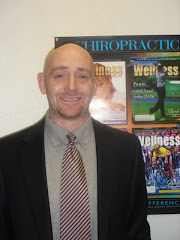Vitamin D Gets Its Day in the Sun
Researchers struggle to balance the potential benefits of the “sunshine” vitamin with proven skin cancer risks.
For years now, dermatologists have taught us to slather on sunscreen at ever-higher SPF levels, don hats, and dodge deadly solar rays. Recently, however, the scientific community has been split by a debate over a startling claim: Maybe a little sunshine is good for us, because those same ultraviolet rays we’ve been warned against also enable the skin to make Vitamin D. And Vitamin D, which can be difficult to obtain in adequate amounts from food or pills, has been linked to possible protection from colon and prostate cancer, as well as osteoporosis.
In a single issue of the National Cancer Institute’s Journal (Feb, 2005), two epidemiological studies suggested that sunlight may reduce the risk of non-Hodgins Lymphoma and may be associated with increased survival rates in patients with – of all things – early stage melanoma. At least a dozen studies are under way to test vitamin D’s effectiveness at cancer prevention, according to Peter Greenwald, M.D., chief of cancer prevention for the NCI. Other researchers are looking at vitamin D as a potential treatment for prostate and lung cancer.
It’s far too soon to declare vitamin D a wonder drug. However, Dr. Edward Giovannucci, a professor of medicine and nutrition at Harvard University and Brigham and Women’s Hospital, co-authored an NCI-funded study that found a relationship between blood levels of vitamin D and subsequent risk of colon cancer among older women. The women, ages 60 and up, with the highest level of vitamin D showed a 46% lower risk than those with the lowest levels of the vitamin.
Does that mean it’s OK to – cautiously – venture back out into the sun for a natural dose vitamin D? According to the dermatology academy, the answer is still a resounding “No!” According to Vincent DeLeo, M.D., a dermatologist at Columbia University, “Under no circumstances should anyone be misled into thinking that natural sunlight or tanning beds are better sources of vitamin D than nutritional supplements.”
Some researchers, and even a few dermatologists, are cautiously disagreeing because dietary sources of vitamin D are relatively scarce. They include fortified milk, fortified brands of cereals and orange juice, and only fish such salmon, mackerel, herring and sardines. Vitamin D is one reason you may have been made to take cod-liver oil as a kid.
An eight-ounce glass of fortified glass of fruit or juice contains only about 100 IUs of vitamin D. The National Academy of Sciences’ recommended daily dietary intake of vitamin D varies by age: 200 IU for ages 19 to 50; 400 IU for ages 51 to 70; and 600 IU for 70 and older. Many experts also think those levels should be set higher. Dr. Giovannucci, for example, says his research show as much as 1,500 IU daily might be needed to have an anti-cancer effect.
Bess Dawson-Hughes, M.D., director of Bone Metabolism Laboratory at Tufts’ Jean Mayer Human Nutrition Research Center on Aging, suggests older adults need at least 800 IUs of vitamin D as part of a program of osteoporosis prevention. “Vitamin D promotes the absorption of dietary calcium,” she explains. “You need an adequate vitamin D level to make use of calcium.”
Supplements can help, but they’re no panacea. Taking “extra” multivitamins to boost vitamin D can mean getting too much vitamin A. Also, taking too much vitamin D in pill form can cause an unhealthy build-up of calcium in the body.
There’s no such limit on the body’s natural vitamin D, which the skin makes from cholesterol when exposed to ultraviolet light. So, Dawson-Hughes is among those who think it’s a good idea to get a little sun – up to 15 minutes – before applying sunscreen. “It doesn’t take a lot of sun to get vitamin D protection, without getting so much as to be toxic in terms of skin cancer.”
Whether you side with the dermatology establishment or are persuaded by researchers like Dr. Giavannucci, a few things are clear: First, avoid sunburn, a known risk factor for melanoma – the deadliest form of skin cancer. Second, there’s no prescription for tanning beds. Ultimately, more research will be needed to answer the questions about vitamin D. According to William J. Blot, Ph.D, of the International Epidemiology Institute, “In view of the major potential public health consequence of these results, further studies of sunlight and the vitamin D connection to cancer are certainly warranted.”
Source: TUFTS UNIVERSITY HEALTH & NUTRITION LETTER
Aug. 2005, Vol. 23, No. 6 pp4
Sunday, June 29, 2008
Subscribe to:
Post Comments (Atom)



No comments:
Post a Comment